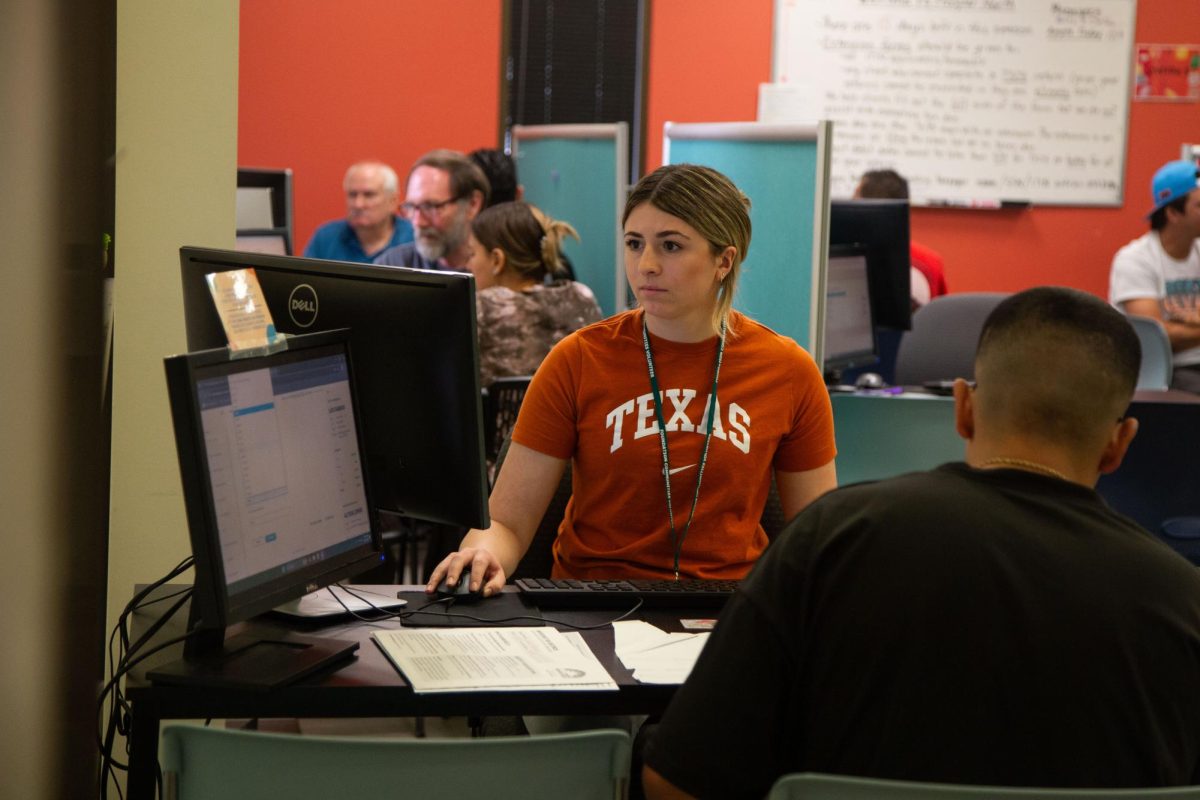As if conjured from the digital ether, a whirlwind of swiping, scrolling and saving envelops visitors as they step into a rendition of the hyper-stimulus within their smartphones. Venturing deeper into the exhibit, visitors encounter a striking sight: a half-human, half-technology humanoid whose face serves as a black mirror reflecting a warped image of the audience.
Expanded Media II and III students will present “CyborgSpace: The Unofficial Guide to the Living Web,” a one-day pop-up exhibition at the Museum of Human Achievement this Saturday, March 30, from noon – 4 p.m. Collaborator Annika Quinn said CyborgSpace explores the concept of the living web by bringing the Internet to life, allowing visitors to talk and interact with it as they explore its domain in a real-life space.
“The ‘living web’ also relates to how the internet has come to life through us, and how we as humans have become part of the living web in a way that cannot be torn from us,” Quinn, an Arts and Entertainment Technologies transfer student, said in an email.
Quinn said she created Metaphysical Interface of Desires Offplaced (MIDO), a colorful and charismatic character to guide visitors. Inspired by Microsoft Office assistants, 2010’s internet culture and comedic AI avatars, Quinn said MIDO and his commentary will question the audience’s own humanity.
“I wanted to create a character that was a representation of humanity’s cultural influence on the internet: Silly, dynamic, getting carried away pretty often (and) many things all at once,” Quinn said. “But not necessarily inherently malicious, even if it does lack a certain degree of empathy.”
Expanded Media Associate Professor Kristin Lucas said she emphasizes collaboration in the classroom through discussions and peer teaching, a focus corroborated by her students. Lucas said her Expanded Media II and III courses include students of varying backgrounds and transmedia skill sets who produced individual works tied by the themes of humanity and the digital space.
“Expanded media is not about learning a particular skill really well because everything is changing all the time,” Lucas said. “It’s about experimenting with the tools of your time and sensing the cultural dynamics and the cultural contexts that are shifting along with the tools.”
Studio Art junior Hoi Lee Chung said she designed graphics and coordinated marketing for “CyborgSpace” while helping her classmates with their installations. For her artwork, Chung said she raided Austin Creative Reuse, leaving with a basketful of CDs and borrowing shoelaces printed with “digital interaction” on them to create a curtain of CDs that reflect rainbow rays across the exhibit.
“Because we have a lot of digital projects, I thought it’d be kind of nice to mix in more physical media so that the audience can interact,” Chung said. “I also wanted to emphasize how obsolete CDs have become because (of) streaming.”
Chung said the class wanted people to contemplate their relationships and role in shaping digital culture.
“This exhibition is a space where we’re allowing the audience to really marinate (and) understand that the Internet is so embedded inside of us that we’re cyborgs at this point,” Chung said. “We look human, but the dependability that we have (on) the Internet is so intense.”














